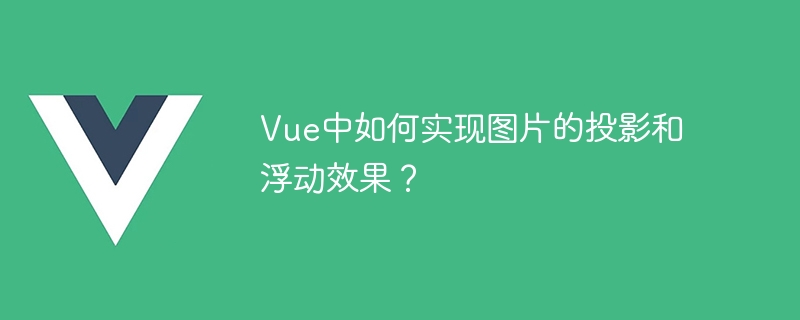
Vue中如何实现图片的投影和浮动效果?
简介:
在现代web设计中,为图片添加投影和浮动效果可以使页面更加生动和吸引人。Vue.js是一种流行的JavaScript框架,可以用于构建交互式的单页应用程序。本文将介绍如何使用Vue.js实现图片的投影和浮动效果,帮助您为网站添加更多的视觉吸引力。
实现投影效果:
为图片添加投影效果是通过为图片元素应用CSS样式来实现的。在Vue.js中,您可以使用组件的方式来组织和管理代码。以下是一个简单的示例,展示如何使用Vue.js为图片添加投影效果:
<template>
<div>
<img :src="imageSrc" class="image" />
</div>
</template>
<script>
export default {
data() {
return {
imageSrc: 'path/to/your/image.jpg'
};
}
};
</script>
<style scoped>
.image {
box-shadow: 0 0 10px rgba(0, 0, 0, 0.5);
}
</style>在上面的示例中,我们定义了一个Vue组件,其中包含一个<img>标签,通过:src属性绑定了图片的路径。在样式部分,我们使用了CSS的box-shadow属性为图片添加了投影效果。通过调整box-shadow的参数,您可以自定义投影的颜色、大小和模糊程度。
立即学习“前端免费学习笔记(深入)”;
实现浮动效果:
要为图片实现浮动效果,我们可以使用Vue.js的动画功能。以下是一个示例,展示如何使用Vue.js实现图片的浮动效果:
<template>
<div>
<transition name="image-float" mode="out-in">
<img :src="imageSrc" class="image" :key="imageSrc" />
</transition>
</div>
</template>
<script>
export default {
data() {
return {
imageSrc: 'path/to/your/image.jpg'
};
}
};
</script>
<style scoped>
.image-float-enter-active,
.image-float-leave-active {
transition: transform 0.5s;
}
.image-float-enter {
transform: translateY(100px);
opacity: 0;
}
.image-float-leave-to {
transform: translateY(-100px);
opacity: 0;
}
</style>在上面的示例中,我们使用了Vue.js的过渡动画功能,在<transition>标签中定义了一个过渡效果。通过为过渡标签指定name属性,并使用相应的CSS类来定义过渡的行为。我们使用mode属性指定了过渡模式为'out-in',这意味着当图片更改时,先隐藏旧图片,然后显示新图片。
在样式部分,我们使用了CSS的transform属性来实现图片的浮动效果。通过设置translateY属性的值来移动图片的垂直位置,通过设置opacity属性的值来控制图片的透明度。通过调整这些属性的值,您可以自定义图片浮动的距离和速度。
总结:
通过使用Vue.js的组件和动画功能,我们可以轻松地为图片添加投影和浮动效果,提升网页的视觉吸引力。您可以根据实际需求调整样式和动画的参数,实现更多的效果和交互。希望本文对您理解如何在Vue.js中实现图片的投影和浮动效果有所帮助!
以上就是Vue中如何实现图片的投影和浮动效果?的详细内容,更多请关注php中文网其它相关文章!

每个人都需要一台速度更快、更稳定的 PC。随着时间的推移,垃圾文件、旧注册表数据和不必要的后台进程会占用资源并降低性能。幸运的是,许多工具可以让 Windows 保持平稳运行。

Copyright 2014-2025 //m.sbmmt.com/ All Rights Reserved | php.cn | 湘ICP备2023035733号